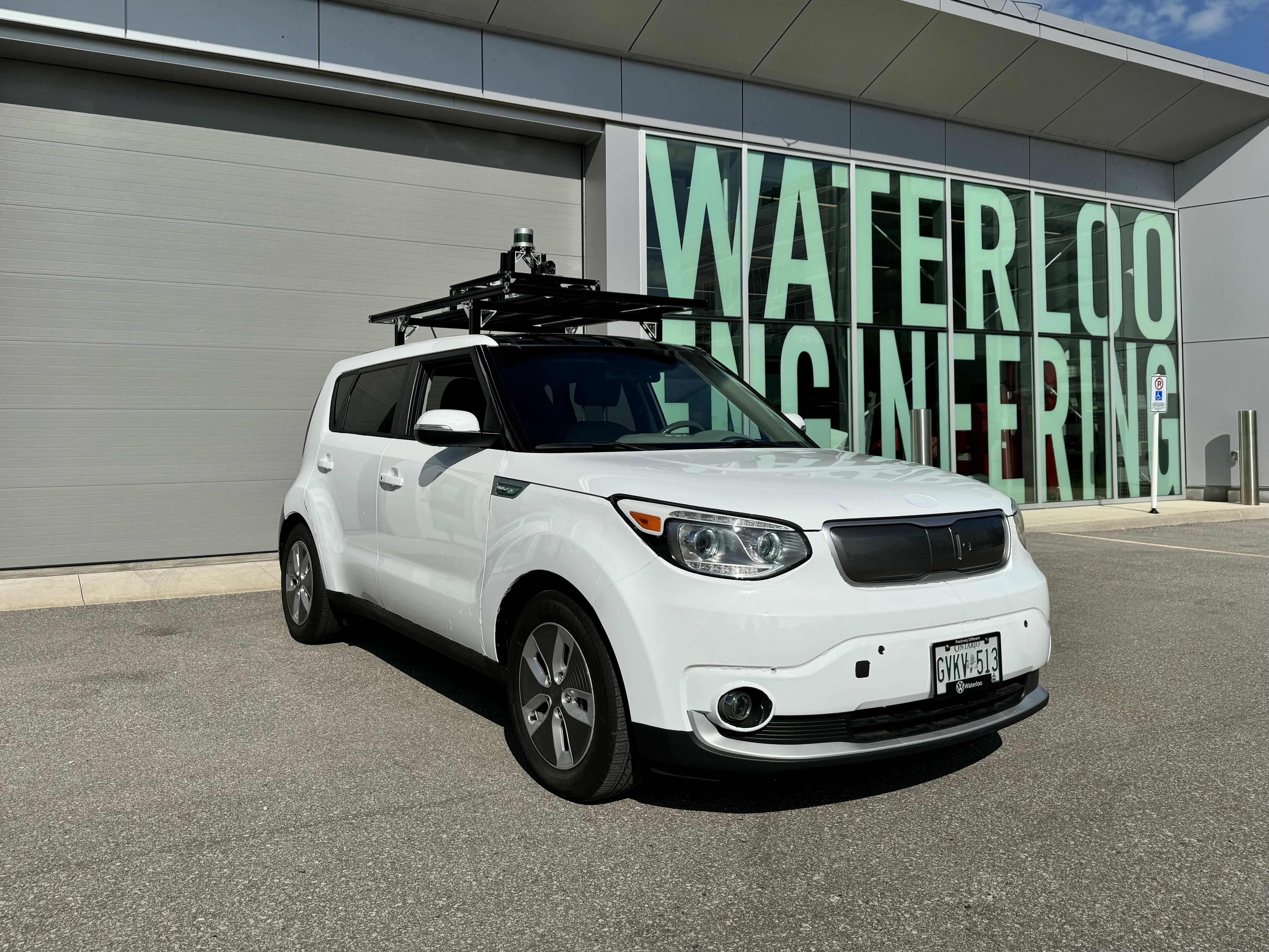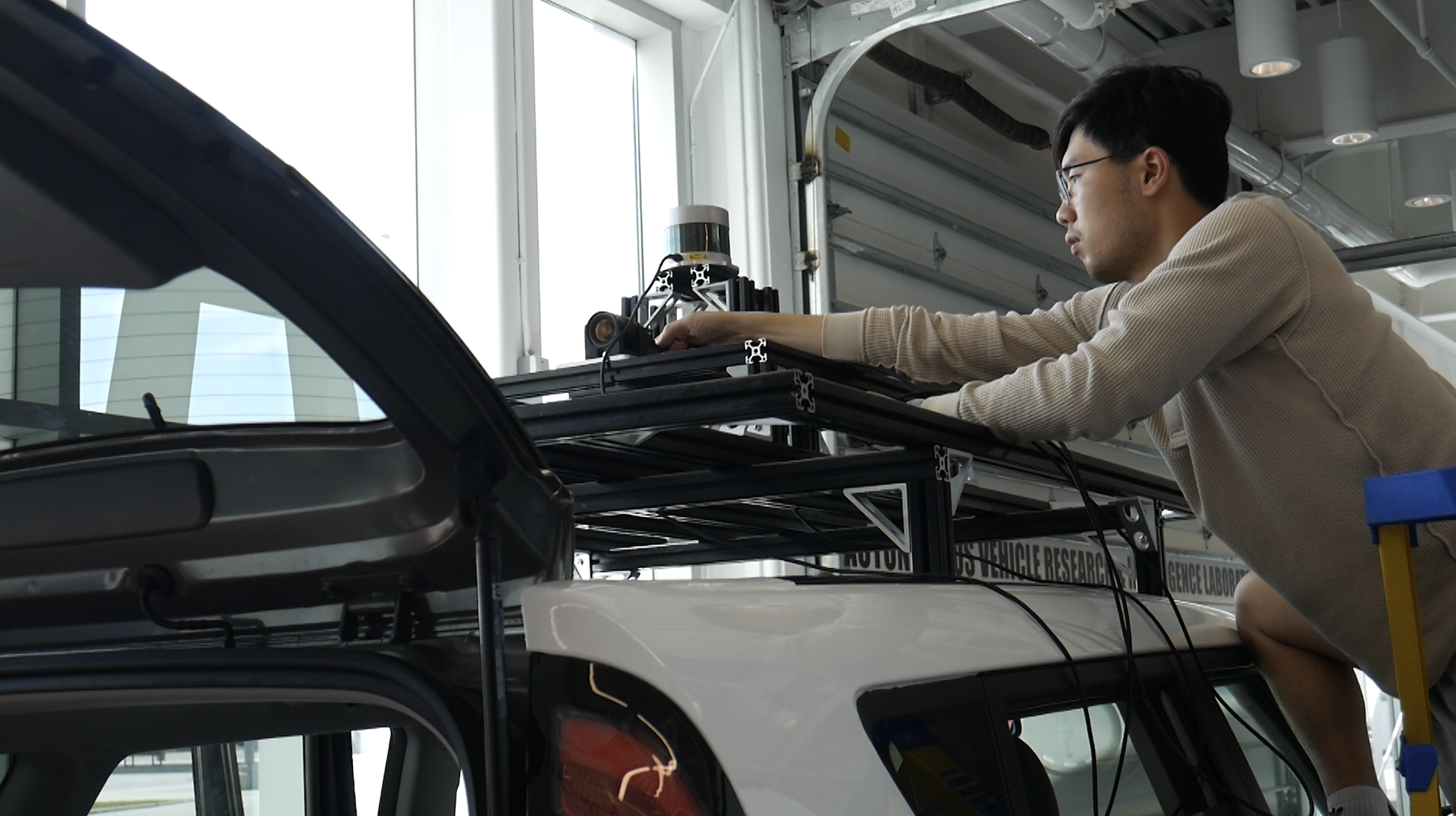WATonomous
WATonomous is the University of Waterloo design team for Autonomous Vehicles. I joined the team in May 2022 under Perception.

I was about to leave the team but heard we got our hands on a new Kia Soul EV, so it’s time to do some good engineering work :))
 This is me working on the car :))
This is me working on the car :))
Learn more at https://watonomous.ca/
Compute
- Intel NUC
- RTX3090 mounted as an eGPU (using Razer Core X Chroma)
Sensors
- Flir Blackfly S (Camera)
- Image resolution of 1920x1200 at 36FPS
- IMX249 6mm 83 Front Left
- IMX249 6mm 83 Front Right
- IMX265 fisheye 180 Side Left
- Velodyne VLP-32C (LiDAR)
- NovAtel (GNSS)
Me working on the car.
Resources
- ASD Data Pipeline https://drive.google.com/file/d/1UdkSYG2ZMaCCc71JoeWvlMS6p9q0AY_f/view
Some of Interesting Challenges We Work On
- At what stage to do Sensor Fusion? Early Fusion, late fusion, mid-level fusion or sequential fusion?
- How do we gather enough data, since we are not a large company like Cruise or Tesla? In house Synthetic Data Generation >- Simulation was mainly used for planning and control. We were running rosbags for testing Perception. However, we are looking into Sim2Real and synthetic data generation
- How to efficiently train multiple networks that share similar features? → Multi-Task Learning
- The Engineering challenge of Integration Hell using ROS
Pages
- WATonomous Style Guide (overkill) → just try to be consistent across the codebase
- WATonomous Cheatsheet
- WATonomous Perception
- WATonomous Field Usage
- WATonomous Infrastructure
- WATonomous Car
- WATonomous Logs
Important Software Development Concepts
- Docker for all software development
- Port Forwarding to forward displays such as Jupyter notebooks and VNC viewers
ssh -NfL 8886:localhost:8886 s36gong@trpro-ubuntu1.watocluster.localPeople I need to talk to:
- Aryan Afrouzi (Interfacing)
- Shiv Patel (Mechanical)
- Saskia (Filmmkaing)